I always thought that ‘erwtensoep’ is very Dutch. However, according to Wikipedia it is common other northern European countries (and even Canada) as well. However, this recipe from my mom is how pea soup should taste like, if you ask me. The home-made stock gives a rich taste. It does take some time to cook and you need to be present to stir. On the other hand, you can make a lot in one go and then store it in the freezer. I’ll start with a short summary of the recipe and then give a longer description with photos.
Ingredients
- Pork leg bones, with meat attached 500 gram — ask the butcher to chop in two so that the marrow can come out.
- Water 1.5 L
- Bay leaf 3x
- Green split peas 500 g (they are dried beans but they don’t need to be soaked before use).
- Leeks 500 g
- Onions 500 g
- Carrots 300 g
- Celeriac 1x
- Celeriac leaves 1 bushel (100 grams)
- Smoked sausage 750 g
- Pepper en salt

The recipe in short
- Make the stock, cook it for a few (three) hours.
- Sieve the stock, add cold water to make 2 liter.
- Cook the split peas for 1 to 1.5 hours.
- Add the vegetables, sausage and remains of the meat and cook for about two hours.
- Remove the lid during the last hour to evaporate the water.
- Be careful not to burn the food.
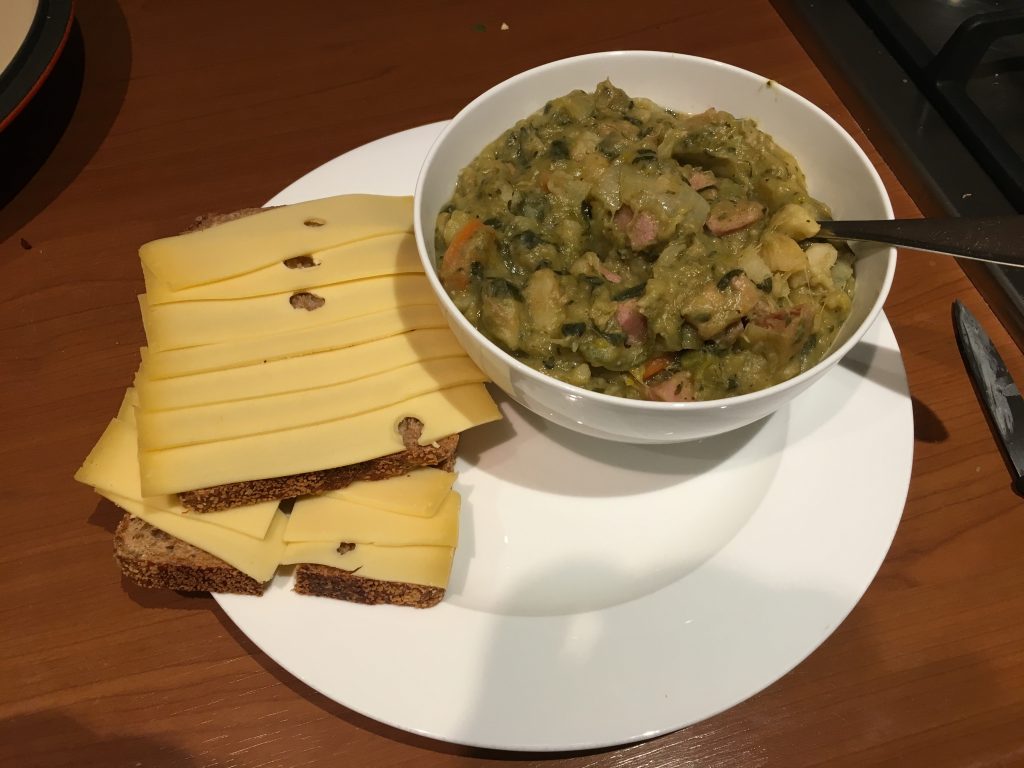
The long version
This weekend I made a double amount of pea soup, see the photo below. I made all stock in one go and then made two pans of soup. I then freeze it.
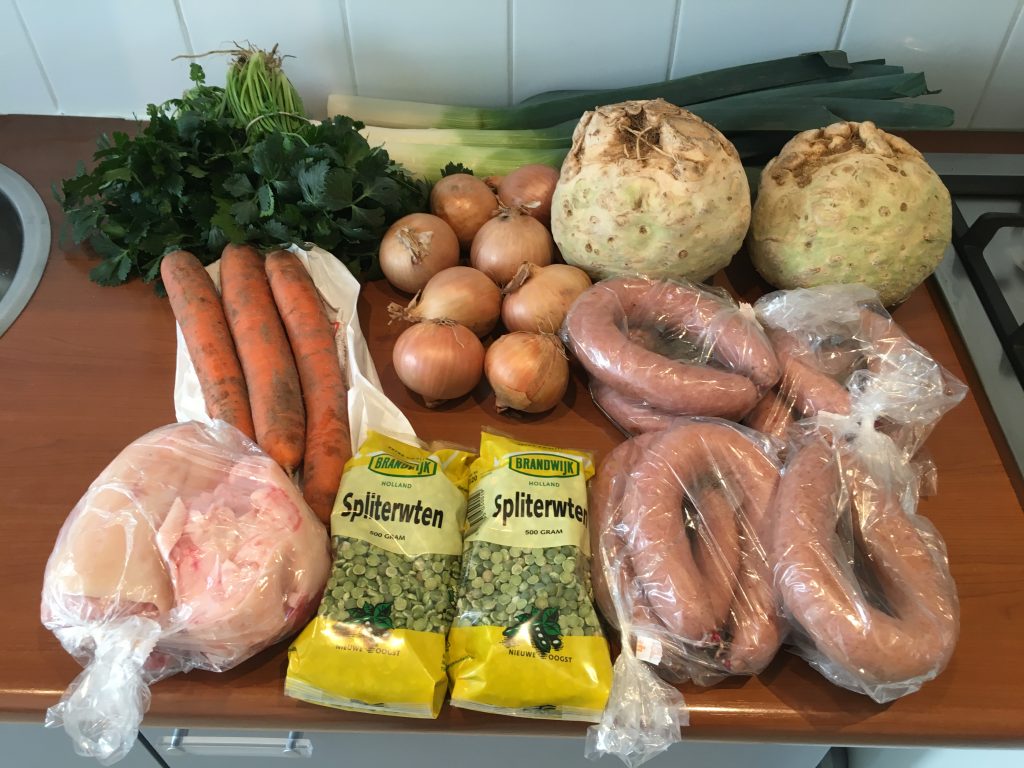
The exact amounts are not very critical. After adding the vegetables and sausage the volume is 6 to 6.5 liters (the pan on the photo is 6.8 liter). This time the amount of vegetables was on the low side. I used 4 smoked sausages (1 kg) per pan. It is a bit much, but I don’t think people will complain :) In the end you are left with 4.5 to 5 liters of soup. People eat 500 to 750 mL per person, a bit less if you serve it with bread with cheese.
The times in the recipe are also not very critical. It is better to take more time than to take less. Cutting the vegetables takes about an hour. Making the stock takes 3 to 4 hour, making the soup also takes 3 to 4 hour.
The only crucial thing in the recipe is to stir often. The problem is that the soup doesn’t circulate in the pan, which may cause it to burn on the bottom. Use a good pan that heats uniformly and use a heat diffuser, on the smallest burner. Alternative you can, after everything has been added, put the pan in the oven (about 180 degrees Celsius). This heats more evenly. The soup dries up a bit on the sides of the pan, but it doesn’t burn. You can stir every half hour or so. If some of the soup has burned, don’t scrap it loose — it is disgusting.
The recipe
Make the stock. Put the pork leg bones in 1.5 liter water and add the bay leafs. Cook with the lid on for a few hours. The longer the better. I usually cook it for three hours. After the first two hours I usually use forks to remove the meat from the bone. I also wiggle the marrow in the bones loose. I then simmer it for another hour or so, at a slightly higher temperature to get some movement in the pan.
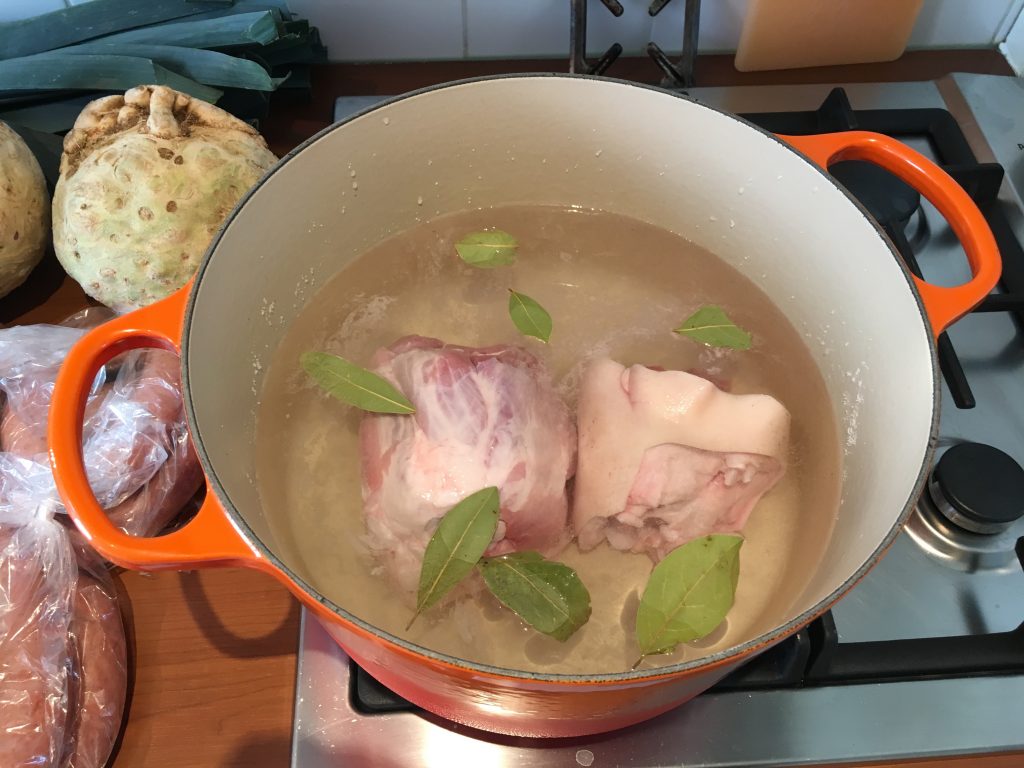
Sieve the stock. Save the meat/bones for later. Measure/estimate how much stock you have (it will be about 1 liter). You can put the stock and meat in the fridge and make the soup the day after.
Add the stock in a pan and add water to make 2 liters. Rinse the peas and put them in the stock. Add pepper and some salt. Bring to a boil, then simmer them for an hour or so. Stir every 15 minutes or so.
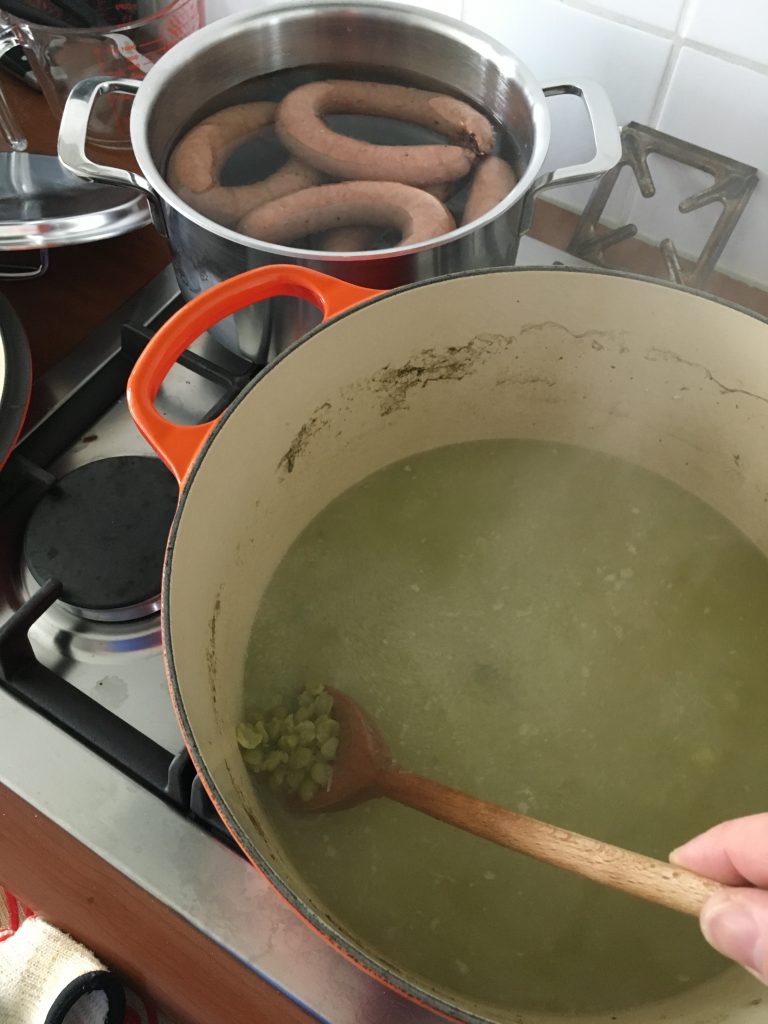
Sort the meat. Discard the bones and tendons. Cut the meat in small pieces. I do use the gelatine-like piece. Add this to simmering peas.
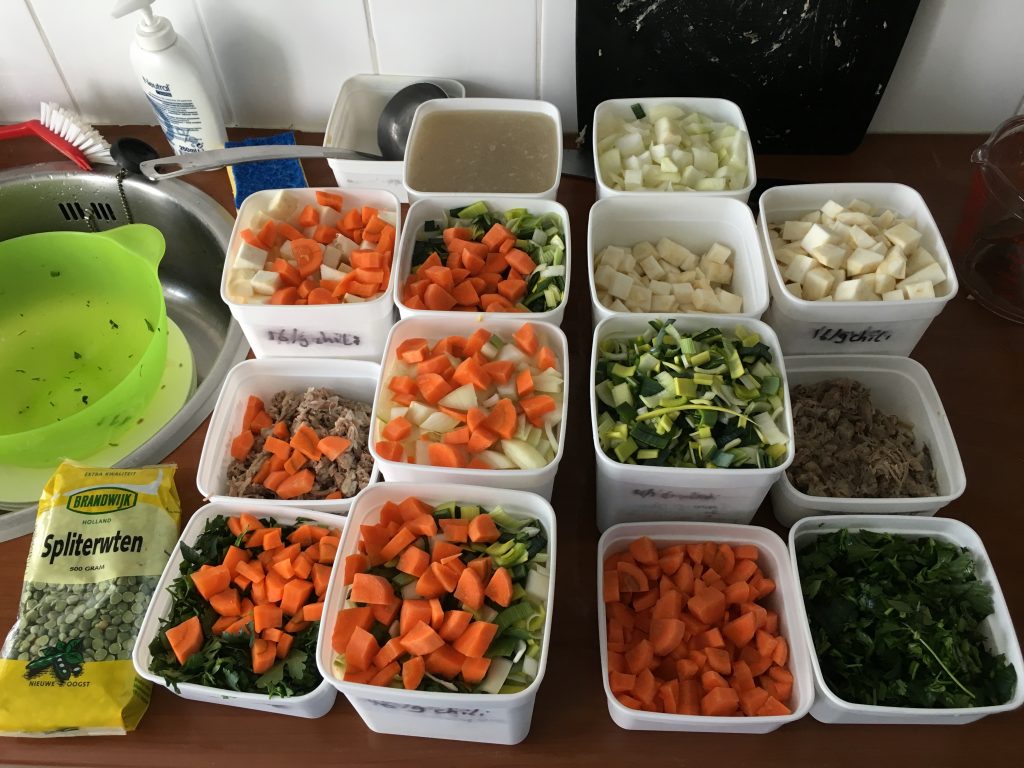
Cut the vegetables. I usually cut them in pieces of 1 cm / 1 cm2 / 1 cm3 or something, but it is not very critical. Warm up the sausages and cut them in pieces.
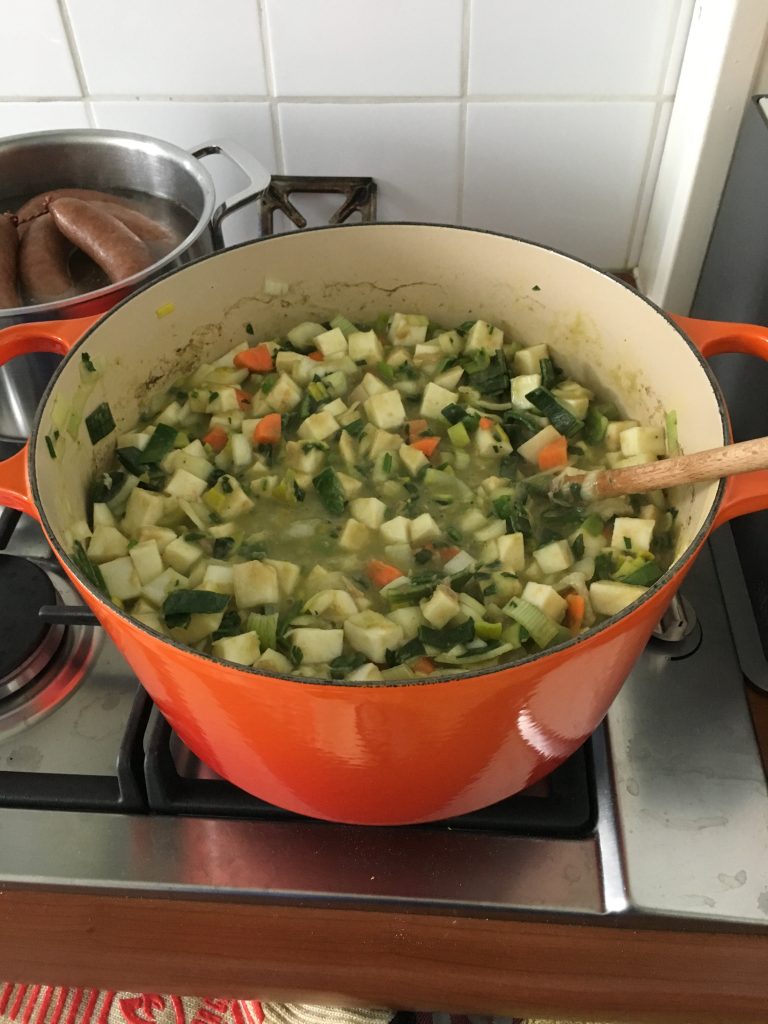
After an hour the peas are falling apart. Add the vegetables and sausage to the pan. It now has to start boiling again. If you do this on high heat you’ll need to stir constantly. You can also use the small burner on high heat and stir every now and then. Once it cooks let it simmer, or put it in the oven.
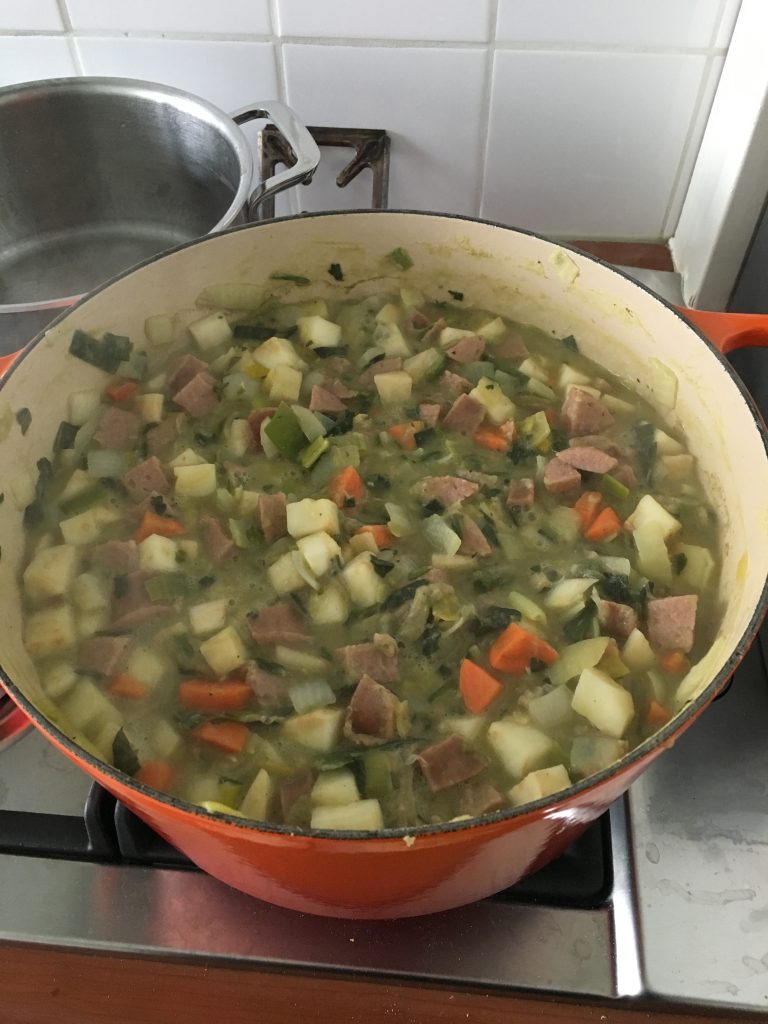
Simmer the soup for one hour with the lid on. Stir it every 10 minutes (every 5 minutes is a bit often, but every 15 minutes is not often enough). After an hour I remove the lid and let it simmer for another hour. Some water evaporates, making the soup thicker. It is ready when a fork doesn’t fall over. You’ll see that the celeriac have fallen apart.
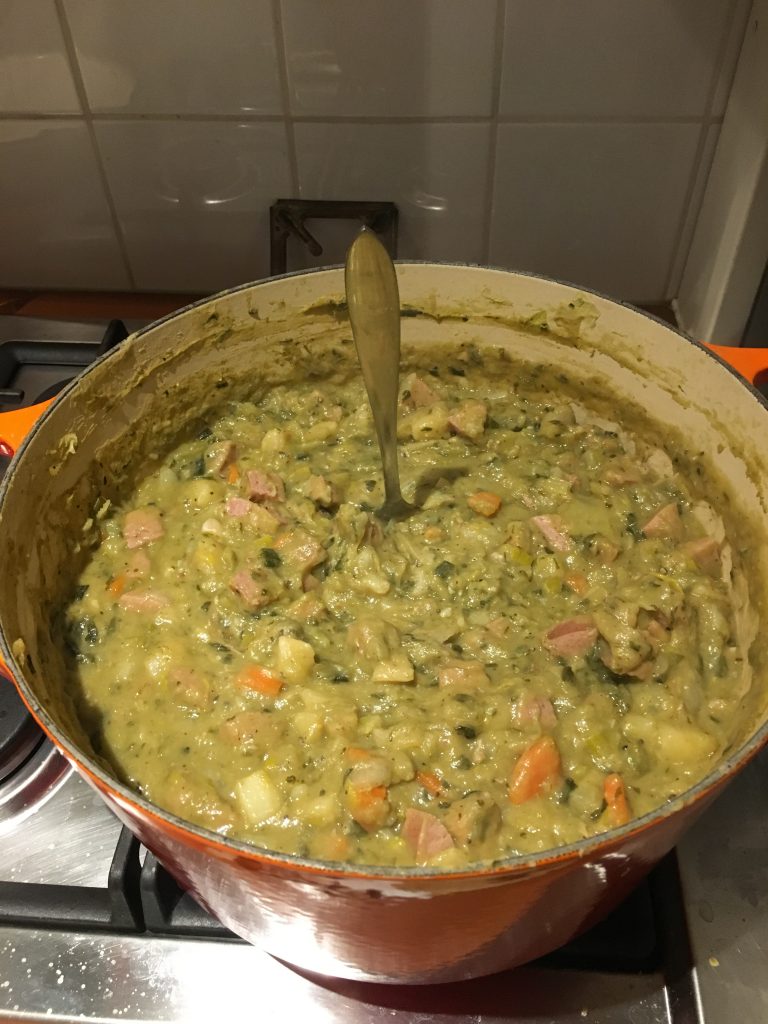
Pea soup tastes better over time. You can make it the day before, or freeze it and eat it later. It is usually served with (dark/dense) bread and cheese.